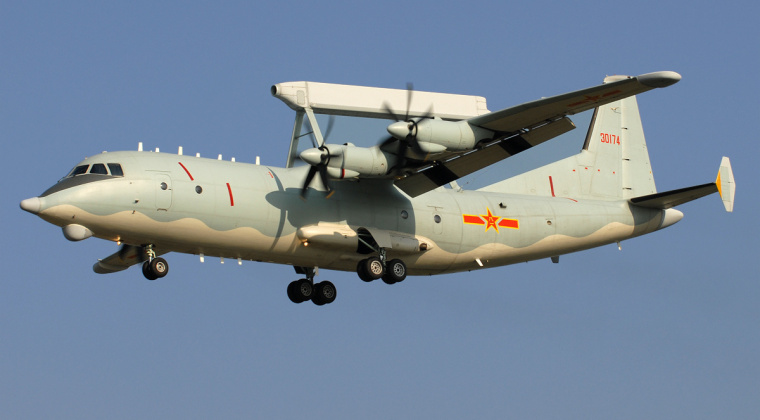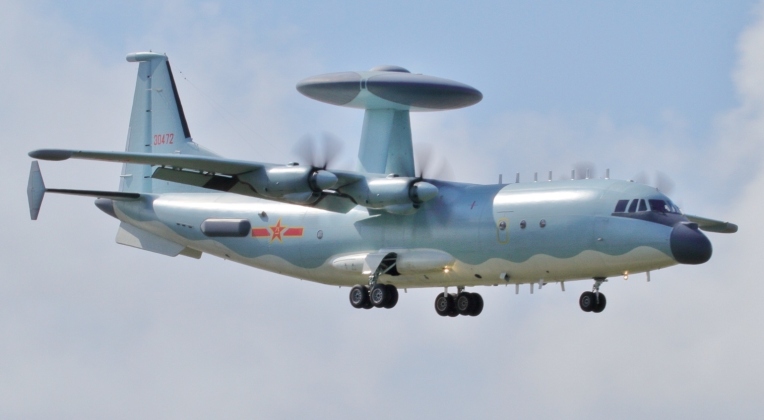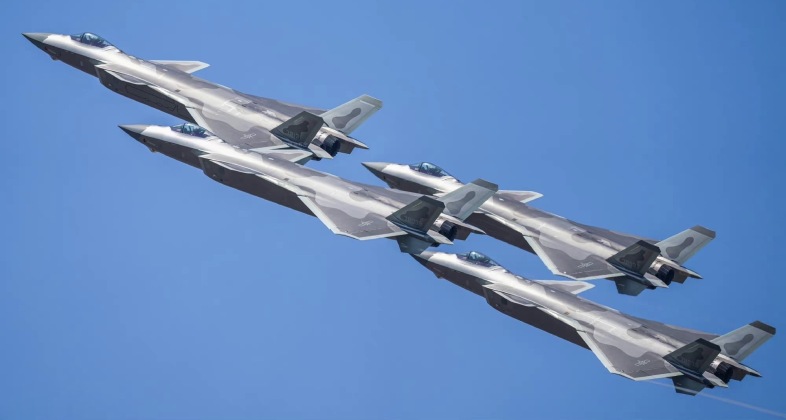News
China’s KJ-500 ‘Flying Radar’ Fleet Growing Fast: Why America Hates This AEW&C Platform

Entering service from 2015, the Shaanxi KJ-500’s deployment under Chinese People’s Liberation Army (PLA) frontline units represented the culmination of efforts over more than a quarter of a century to develop a world class airborne early warning and control (AEW&C) aircraft. This had become an urgent priority after the value of these assets was demonstrated during the Gulf War in 1991 by the U.S. Air Force’s E-3 Sentry fleet, and saw the KJ-2000 and KJ-200 enter service in the 2000s with capabilities considered below the cutting edge, but which still provided important experience in operating dedicated AEW&C assets. The KJ-500 boasted important advancements over its predecessors including benefitting from improvements in China’s AESA radar and data link technologies, and gaining the ability to track 100 targets simultaneously. Its radar was developed by the 38th Research Institute of the China Electronics Technology Group Corporation, and houses three separate sensors within a saucer-shaped dome – which also carries a satellite communications antenna and two passive electronic intelligence arrays.
The KJ-500 was developed based on the indigenous Shaanxi Y-9 four engined turboprop transport, providing maintenance commonality as well as relatively low operational costs compared to the larger Russian Il-76 airframe which was used as the basis for developing the preceding KJ-2000 aircraft. The aircraft integrates four FWJ-6C 5,100 horsepower turboprop engines with six-bladed propellers, and has a higher endurance than jet aircraft like the IL-76 making it ideal for loitering as AEW&C aircraft are often required to. Where the Y-9 had a capacity for carrying 132 airborne personnel, the AEW&C variant is crewed by four personnel with the remaining carrying capacity covered by the weight of the sensor suite and other avionics. Beyond the main sensors, other modifications to the Y-9 airframe include the additions of dedicated crew command consoles and antenna arrays. Use of the Y-9 airframe provides an innovative means of achieving low operational costs and high availability rates, where the primary AEW&C aircraft of the U.S. Air Force and Russian Air Force the E-3 and A-50 use heavier jet powered aircraft which have both suffered from very low availability rates and wide ranging maintenance issues in recent years.

The People’s Liberation Army’s satisfaction with the KJ-500 was reflected in the much larger numbers it was acquired in compared to preceding aircraft. An estimated 17 KJ-500s were deployed by the beginning of 2018, which already made it the most numerous in service, before an increase in the scale of production was announced that year. By contrast only four KJ-2000s and around 12 KJ-200s had entered service. Expanded production brought the fleet up to an estimated 28 aircraft by 2022, approximately evenly split between the air force and naval aviation units. This made it by far the most widely fielded AEW&C aircraft outside the U.S. Military, with similar assets being fielded in relatively small numbers by other air forces while the large majority fielded none at all. The enhanced KJ-500A variant was unveiled at Airshow China 2022 in Zhuhai in November, and featured significant improvements to avionics. A number of sources reported that this variant had begun to enter service in 2020, which indicated production could have begun in 2018 when production lines were expanded.

With AEW&C aircraft serving as major force multipliers for combat assets across the services, but particularly combat aviation, the KJ-500 has gained particular prominence due to its operations alongside China’s most high profile fighter the Chengdu J-20. J-20s were first delivered to the air force in 2016, and by 2022 the fleet was estimated to have grown to around 200 aircraft after entry into full scale production the previous year. The class saw its first encounter with another fifth generation fighter confirmed in March 2022, with United States Pacific Air Forces commander Kenneth Wilsbach singling out the KJ-500 at the time for the important role it played in supporting J-20 operations. “We’re relatively impressed with the command and control associated with the J-20… aircraft in the region… were pretty well commanded and controlled by the Chinese assets,” he stated. “The KJ-500… plays a significant role in some of their capability for long range fires. Some of their very long range air to air missiles are aided by that KJ-500. Being able to interrupt that kill chain is something that interests me greatly.”
Wilsbach’s comments drew attention to the fact that China is the only potential U.S. adversary to field state of the AEW&C capabilities, with its numbers dwarfing Russia’s ageing A-50 fleet while other countries such as North Korea and Iran have no such aircraft whatsoever. This and the KJ-500’s position, with a very large production scale, very high numbers, and capabilities far surpassing those of the E-3 and rivalling those of its recently ordered successor the E-7, makes it by far the most threatening AEW&C platform to U.S. and Western interests. Although maintaining a lower profile than assets such as H-20 bombers and J-20 fighters, the KJ-500’s development has complemented the rapid modernisation of the Chinese combat fleet and been a leading cause for concern among China’s potential adversaries.












